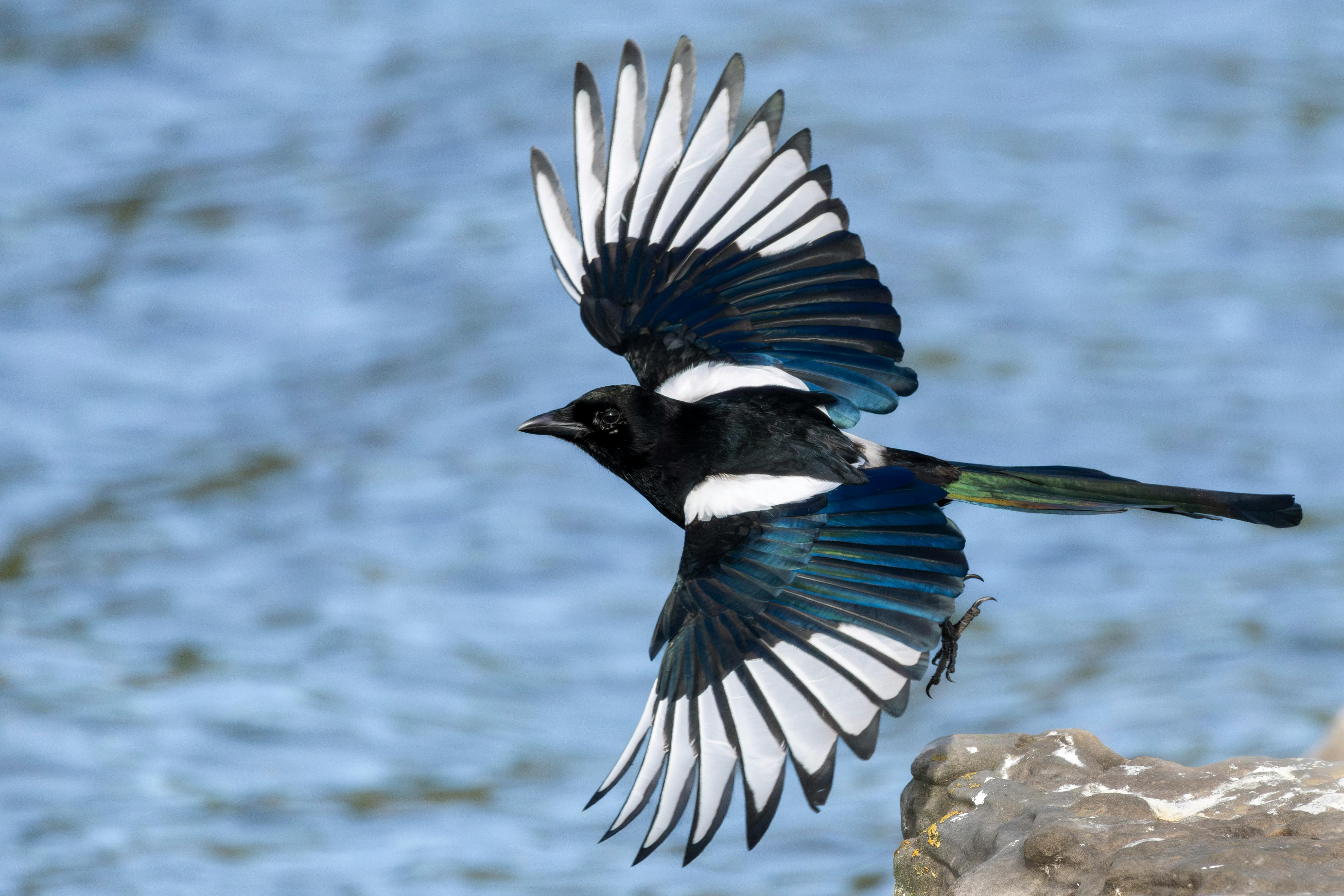The Black-billed Magpie (Pica hudsonia) is a bird species commonly found in the western regions of North America, known for its social structure and intelligence. A member of the crow family (Corvidae), this bird prefers habitats such as shrublands, open areas, and rural landscapes. With its long tail, white wing patches, and glossy black plumage, it has a distinctive appearance. It communicates through loud and recognizable calls, often producing sounds like “yak, yak, yak.”
Morphological Characteristics
Black-billed magpies typically measure between 45 and 60 cm in length, with more than half of this length being their tail. Their wingspan ranges from 56 to 61 cm, and their weight varies between 145 and 210 grams. They have black heads, backs, and tails, with prominent white patches on their shoulders and wings. The beak and legs are black. Their shiny black feathers can reflect iridescent hues of bronze, blue, and green depending on the light.

Black-billed Magpie (Pexels)
Distribution and Habitat
Pica hudsonia inhabits a broad geographical range from the prairie provinces of Canada to the western desert regions of the United States. They can be observed at elevations up to 3,000 meters. Suitable habitats include forest edges, open fields, farmlands, rural areas, and locations near water sources. They are also adaptable to urbanized environments.
Behavior and Ecology
This highly social species typically lives in family groups of 6 to 10 individuals and may form larger flocks outside the breeding season. They demonstrate behaviors such as flipping objects, food caching, and problem-solving. When faced with danger, they engage in cooperative group defense. Their nest construction is elaborate; building large, enclosed, dome-shaped nests can take up to 40 days.
Diet
Black-billed magpies are opportunistic omnivores. Their diet includes insects, small vertebrates, bird eggs, carrion, as well as fruits, grains, and seeds. They often cache food supplies to prepare for periods of scarcity.
Ecological Role
This species plays several roles in the ecosystem. By feeding on parasites like ticks, they provide symbiotic benefits to large mammals. Their sturdy nests may be reused by other bird species. Additionally, by preying on harmful agricultural insects, they indirectly support human activities.
Reproduction
Black-billed magpies are monogamous, usually forming long-term pair bonds and nesting in the same area across consecutive seasons. The breeding season typically occurs from late March to May.
Nests are built in shrubs, trees, or artificial structures, generally at heights of 3–10 meters. Their nests are complex, large, and dome-shaped, with the outer structure made of thorny branches and mud, and the inner lining composed of soft materials. Nest building can take up to 40 days.
The female usually lays 6 to 9 eggs, which are pale blue-green with brown speckles. The incubation period lasts 16 to 18 days and is carried out solely by the female, while the male supports her by bringing food.
Hatchlings are altricial, meaning they are helpless and require parental care. Both parents feed the chicks, which typically fledge after 25 to 30 days but remain with their parents for a while longer, continuing to receive care.
Conservation Status
In the United States, the species is protected under the Migratory Bird Treaty Act. In Canada, it does not benefit from the same level of legal protection. Although generally classified as “Least Concern,” local populations face threats from habitat loss and agricultural activities in some regions. The longest recorded lifespan for an individual was 9 years and 5 months.


